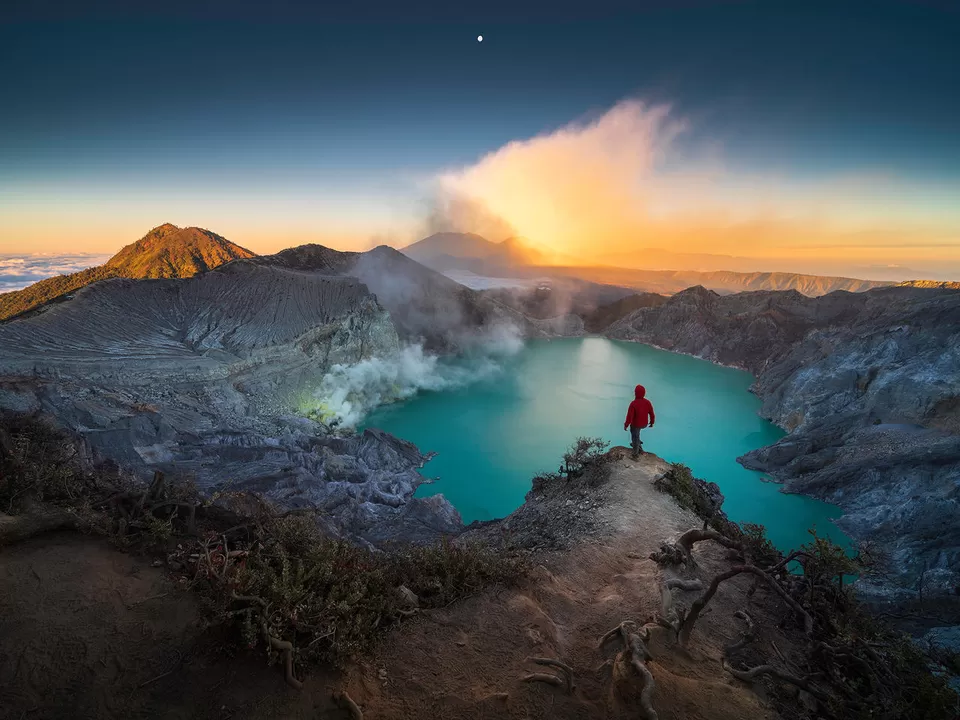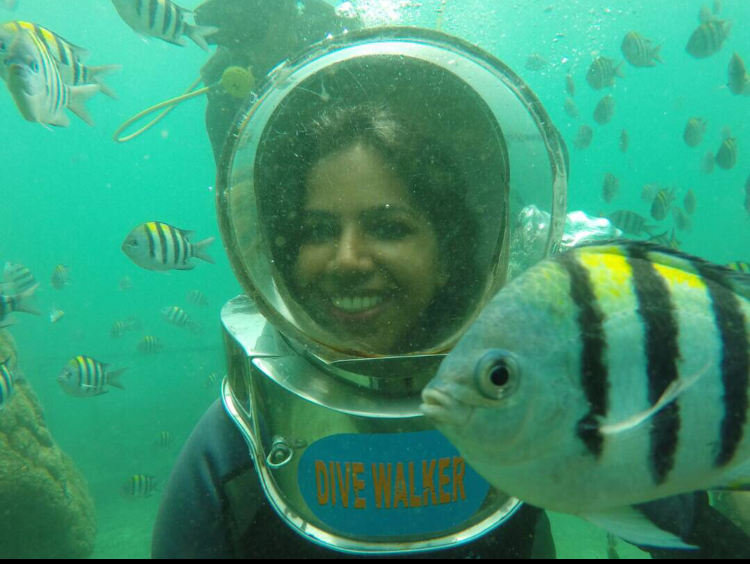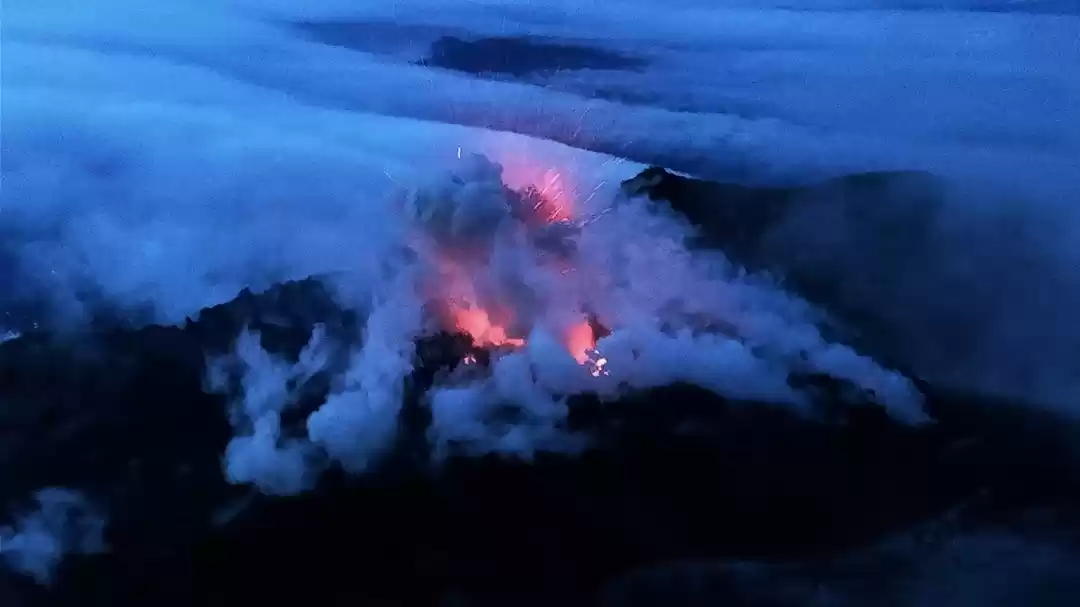Have you ever wondered what it would be like to see blue fire in nature? Or how about a lake that is so acidic that it can dissolve metal? If you are looking for a truly extraordinary and unforgettable experience, then you should visit Kawah Ijen, a volcano in East Java, Indonesia, that has both of these phenomena.
Kawah Ijen is one of the most active and beautiful volcanoes in the world, and it is also one of the most challenging and rewarding hikes you can do. You will have to wake up in the middle of the night, trek for about three hours in the dark, and wear a gas mask to protect yourself from the toxic fumes. But the reward is worth it: you will witness the blue fire, a rare natural phenomenon that occurs when sulfur gas ignites in contact with air, creating a mesmerizing blue flame that can reach up to five meters high. You will also see the crater lake, a turquoise-colored body of water that is the largest acidic lake in the world, with a pH of 0.5. And you will enjoy the sunrise, a spectacular sight that will illuminate the landscape with different shades of orange, pink, and purple.
In this article, we will tell you everything you need to know about visiting Kawah Ijen, including how to get there, what to expect, and what to bring. We will also share some tips and insights that will help you make the most of your trip. Whether you are a solo traveler, a couple, a family, or a group of friends, you will find something for everyone in this amazing adventure.
How to Visit Kawah Ijen
There are several ways to get to Kawah Ijen, depending on where you are coming from and what your budget and preferences are. Here are some of the most common options:

From Bali:
If you are in Bali, you can take a ferry from Gilimanuk to Ketapang, which takes about an hour and costs around 10,000 IDR (0.7 USD) per person. From Ketapang, you can take a bus or a taxi to Banyuwangi, which is the closest town to Kawah Ijen. The bus takes about an hour and costs around 20,000 IDR (1.4 USD) per person, while the taxi takes about 30 minutes and costs around 150,000 IDR (10.6 USD) per car. From Banyuwangi, you can join a tour or hire a driver to take you to the base of the volcano, which is about an hour away. Alternatively, you can book a tour package from Bali that includes transportation, accommodation, and a guide for the hike. This option is more convenient and comfortable, but also more expensive, ranging from 1,500,000 IDR (106 USD) to 3,000,000 IDR (212 USD) per person, depending on the quality and duration of the tour.
From Yogyakarta:
If you are in Yogyakarta, you can take a train to Banyuwangi, which takes about 12 hours and costs around 200,000 IDR (14.1 USD) per person. From Banyuwangi, you can follow the same steps as above to get to the base of the volcano. Alternatively, you can book a tour package from Yogyakarta that includes transportation, accommodation, and a guide for the hike. This option is also more convenient and comfortable, but also more expensive, ranging from 2,000,000 IDR (141 USD) to 4,000,000 IDR (282 USD) per person, depending on the quality and duration of the tour.
From Banyuwangi:
If you are already in Banyuwangi, you can join a tour or hire a driver to take you to the base of the volcano, which is about an hour away. A tour usually costs around 300,000 IDR (21.2 USD) per person, and includes transportation, a guide, a gas mask, and breakfast. A driver usually costs around 500,000 IDR (35.3 USD) per car, and does not include a guide, a gas mask, or breakfast. You can also rent a motorbike and drive yourself to the base of the volcano, which costs around 100,000 IDR (7.1 USD) per day, plus fuel. However, this option is not recommended for inexperienced or solo riders, as the road is steep, narrow, and dark.
The best time to visit Kawah Ijen is between April and October, when the weather is dry and clear. The rainy season, which lasts from November to March, can make the hike more difficult and dangerous, as the trail can be slippery and muddy, and the visibility can be low. The entrance fee to the volcano is 100,000 IDR (7.1 USD) per person on weekdays, and 150,000 IDR (10.6 USD) per person on weekends and holidays. The opening hours are from 1:00 AM to 2:00 PM, but the best time to start the hike is around 2:00 AM, so you can reach the top before sunrise and see the blue fire.
What to Expect from the Kawah Ijen Hike
The hike to Kawah Ijen is not for the faint-hearted, as it is physically demanding and mentally challenging. The hike starts from the base of the volcano, which is at an altitude of 1,850 meters above sea level. The trail is about 3 kilometers long, and ascends to the rim of the crater, which is at an altitude of 2,380 meters above sea level. The trail is mostly paved and well-marked, but it is also steep and uneven, with an average slope of 25%. The hike takes about two to three hours, depending on your fitness level and pace.
Once you reach the rim of the crater, you will have to descend to the bottom of the crater, which is another 800 meters down. The trail is not paved or marked, and it is very rocky and slippery. You will also have to wear a gas mask, as the sulfur gas is very strong and harmful to your lungs and eyes. The descent takes about 30 minutes, and the ascent takes about 45 minutes.
At the bottom of the crater, you will see the blue fire, which is only visible in the dark. The blue fire is caused by the combustion of sulfur gas, which escapes from the cracks in the volcanic rocks. The gas burns with a blue flame, creating a surreal and stunning spectacle. The blue fire can be seen from 2:00 AM to 4:00 AM, and it is best to see it from a safe distance, as the gas can be unpredictable and explosive.
You will also see the crater lake, which is a turquoise-colored body of water that fills the crater. The lake is the largest acidic lake in the world, with a pH of 0.5, which means it is almost as acidic as battery acid. The lake is also very hot, with a temperature of 40°C. The lake is so acidic that it can dissolve metal, and it is also very dangerous, as it can release toxic gases and cause landslides. The lake is not suitable for swimming or touching, and it is best to admire it from a safe distance.
You will also see the sulfur miners, who are the local people who work in the crater. The sulfur miners collect the solidified sulfur, which is yellow and crystalline, and carry it in baskets to the base of the volcano. The sulfur miners can carry up to 90 kilograms of sulfur per trip, and they make up to four trips per day. The sulfur miners earn around 900 IDR (0.06 USD) per kilogram of sulfur, which means they make around 324,000 IDR (22.8 USD) per day. The sulfur miners work in very harsh and hazardous conditions, and they face many health risks, such as respiratory problems, eye irritation, skin burns, and back pain. The sulfur miners are very friendly and resilient, and they are happy to pose for photos and chat with visitors. However, they also appreciate some tips or donations, as they have a very low income and a very hard life.
After you explore the bottom of the crater, you will have to climb back to the rim of the crater, and then hike back to the base of the volcano. On your way back, you will enjoy the sunrise, which is one of the most beautiful and rewarding parts of the hike. The sunrise will light up the sky with different colors, and reveal the stunning scenery of the volcano and its surroundings. You will see the contrast between the blue lake, the yellow sulfur, the green vegetation, and the brown rocks. You will also see the steam and smoke that rise from the crater, creating a dramatic and mystical effect. The sunrise can be seen from 5:00 AM to 6:00 AM, and it is best to see it from the rim of the crater, where you can have a panoramic view of the landscape.
What to Bring for the Kawah Ijen Hike
The hike to Kawah Ijen requires some preparation and equipment, as it is a challenging and adventurous activity. Here are some of the essential items that you need to bring for the hike:

Hiking shoes: You will need a pair of sturdy and comfortable hiking shoes, as the trail is steep, rocky, and slippery. You will also need to protect your feet from the heat and the sharp sulfur crystals. Avoid wearing sandals, flip-flops, or sneakers, as they can cause injuries and blisters.
Warm clothes: You will need to dress warmly, as the temperature at the volcano can drop to 10°C or lower at night. You will also need to protect yourself from the wind and the rain, as the weather can change quickly and unexpectedly. Wear layers of clothing that you can easily adjust, such as a t-shirt, a sweater, a jacket, and a hat. Avoid wearing cotton, as it can absorb moisture and make you feel colder. Opt for synthetic or wool fabrics, as they can keep you warm and dry.
Gas mask: You will need to wear a gas mask, as the sulfur gas is very harmful to your lungs and eyes. The gas mask will filter out the gas and allow you to breathe normally. You can buy or rent a gas mask at the base of the volcano, or you can bring your own. Make sure the gas mask fits well and covers your nose and mouth. Avoid wearing glasses, as they can fog up and impair your vision. If you wear contact lenses, make sure they are comfortable and moist.
Headlamp: You will need to bring a headlamp, as the hike starts in the dark and there is no lighting on the trail. The headlamp will help you see the trail and avoid obstacles. You will also need it to see the blue fire and the lake at the bottom of the crater. You can buy or rent a headlamp at the base of the volcano, or you can bring your own. Make sure the headlamp has enough battery and brightness. Avoid using your phone as a flashlight, as it can drain your battery and distract you from the hike.
Water: You will need to bring enough water, as the hike is long and strenuous. You will also need to stay hydrated, as the altitude and the heat can dehydrate you. You can buy or refill water at the base of the volcano, or you can bring your own. Make sure you drink enough water before, during, and after the hike. Avoid drinking alcohol, coffee, or soda, as they can dehydrate you and affect your performance.
Snacks: You will need to bring some snacks, as the hike is energy-consuming and you will need to replenish your calories. You will also need to eat something before the hike, as you will start the hike on an empty stomach. You can buy or bring some snacks, such as nuts, bars, fruits, or chocolate. Make sure you eat something light and easy to digest. Avoid eating spicy, greasy, or heavy food, as they can upset your stomach and make you feel sick.
Camera: You will need to bring a camera, as the hike is full of amazing and unique sights that you will want to capture and remember. You can use your phone, a digital camera, or a GoPro, depending on your preference and budget. Make sure your camera has enough battery and memory. Avoid using flash, as it can ruin the natural light and disturb the wildlife. Be respectful and mindful of other hikers and miners when taking photos, and ask for permission before taking photos of people.
Kawah Ijen is a volcano that offers a once-in-a-lifetime experience of seeing blue fire and an acidic lake. It is also a hike that tests your physical and mental endurance and rewards you with stunning views and unforgettable memories. If you are looking for a truly extraordinary and unforgettable adventure, then you should visit Kawah Ijen, and follow our guide and tips to make the most of your trip. You will not regret it, and you will have a story to tell for the rest of your life.
If you enjoyed this article, please share it with your friends and family, and leave us a comment below. We would love to hear from you and answer any questions you might have. You can also check out our other articles and resources on Tripoto, where you can find more information and inspiration for your next travel destination. Thank you for reading, and happy travels!






























